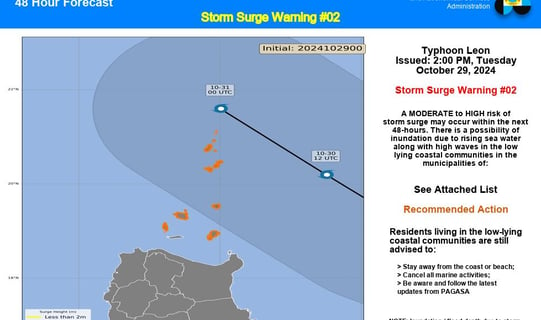Understanding the Impact of Typhoon Leon in the Philippines: A Comprehensive Overview
LTM, Dreamer
10/29/20242 min read


Typhoon Leon Updates
Typhoon Leon has recently affected various regions in the Philippines, bringing with it severe weather conditions and causing significant disruption. This tropical storm approached the Philippines with fierce winds and heavy rainfall, endangering the lives and properties of many residents. In this article, we will discuss the places most affected by Typhoon Leon and the associated dangers, particularly the threat posed by storm surges.
Affected Areas in the Philippines
As Typhoon Leon made landfall, several areas experienced the brunt of its impact. The provinces of Quezon, Bicol Region, and Eastern Visayas were among the most severely hit. Coastal communities in these regions faced not only wind damage but also the perilous possibility of flooding and storm surges. Calabarzon, particularly the cities like Lucena and Laguna, recorded extensive rainfall, leading to the risk of landslides and flash flooding.
Furthermore, the National Disaster Risk Reduction and Management Council (NDRRMC) has positioned various teams in areas such as Catanduanes, Albay, and other coastal towns across the Philippine archipelago to aid in emergency response and recovery efforts. The alarming reports indicated that provinces as far as Pangasinan and Ilocos Sur also felt the adverse weather effects, underscoring the broad impact of Typhoon Leon.
The Danger of Storm Surge
One of the gravest dangers associated with Typhoon Leon is the phenomenon known as storm surge. This occurs when strong winds push seawater towards the coast, leading to an increase in sea levels that can inundate coastal areas and cause significant destruction. Residents in affected locales must be aware of the storm surge's potential to rise several feet above normal tide levels.
The storms typically bring intense rainfall, compounded by storm surges that can completely submerge low-lying areas, leading to loss of property and, tragically, lives. The NDRRMC has issued warnings for residents in high-risk zones to remain vigilant and to heed evacuation orders when provided. Observations indicate that storm surges can exacerbate erosion and damage, particularly to infrastructure such as roads and bridges—making recovery an arduous process.
Conclusion
In summary, Typhoon Leon has severely impacted parts of the Philippines, endangering communities with heavy rainfall and the very real threat of storm surges. The necessity for comprehensive emergency preparedness cannot be overstated, as communities must remain aware of the risks posed by such powerful natural phenomena. As recovery efforts continue, it is imperative for local governments and organizations to work closely to assist those affected and to mitigate future risks of cyclonic storms.


Here is the illustration from Dost Pag asa
Insights
Honest reviews for informed shopping decisions.
Quality
Trust
info@reviewph.com
+63-9197557861
Disclaimer: The material used in this is purely for [educational/entertainment/informational/etc.] purposes. We do not claim ownership of the [music/images/footage/etc.] used, and no copyright infringement is intended. All rights go to their respective owners. If you are the [artist/creator/rights holder/etc.] and would like us to remove this content, please contact us and we will comply with your request immediately.
© 2024. All rights reserved.
